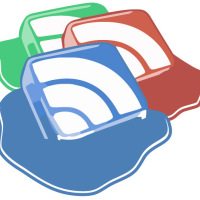Google Reader was a popular site that allowed users to follow their favorite blogs and news sites, putting all of the content in one easily navigated place. However, when Google decided to shut down Google Reader, many people were very unhappy because of features they would miss.
Tag: Google Reader
-

Three Lessons From the Death of Google Reader
Last week Google faced a surge of backlash for its decision to retire Reader. As a fan of RSS feeds and daily user of Reader, I identified with the rage being expressed online. However, as I narrated my woes to some of my friends, they seemed confused. As I paused for breath, a friend asked, “Umm, what is Reader, exactly?”
Here I was, in righteous rage about a service that I clearly cared about, but the larger world hardly knew that Reader existed, let alone that it would shutdown on July 1. Come to think of it, news and even tech websites invariably explain what the term RSS means, assuming that a good chunk of their readers might not know what RSS stands for or what it does. (To compare, just think: when was the last time you saw a website describe Twitter as a ‘micro-blogging site.’)
I stumbled into another startling fact when I went to the Google Reader blog to check out the official announcement, dated March 13, 2013. The previous entry was dated October 31, 2011. As Chris Wetherell, the creator of Reader, himself notes, Google Reader was “living on borrowed time.”
